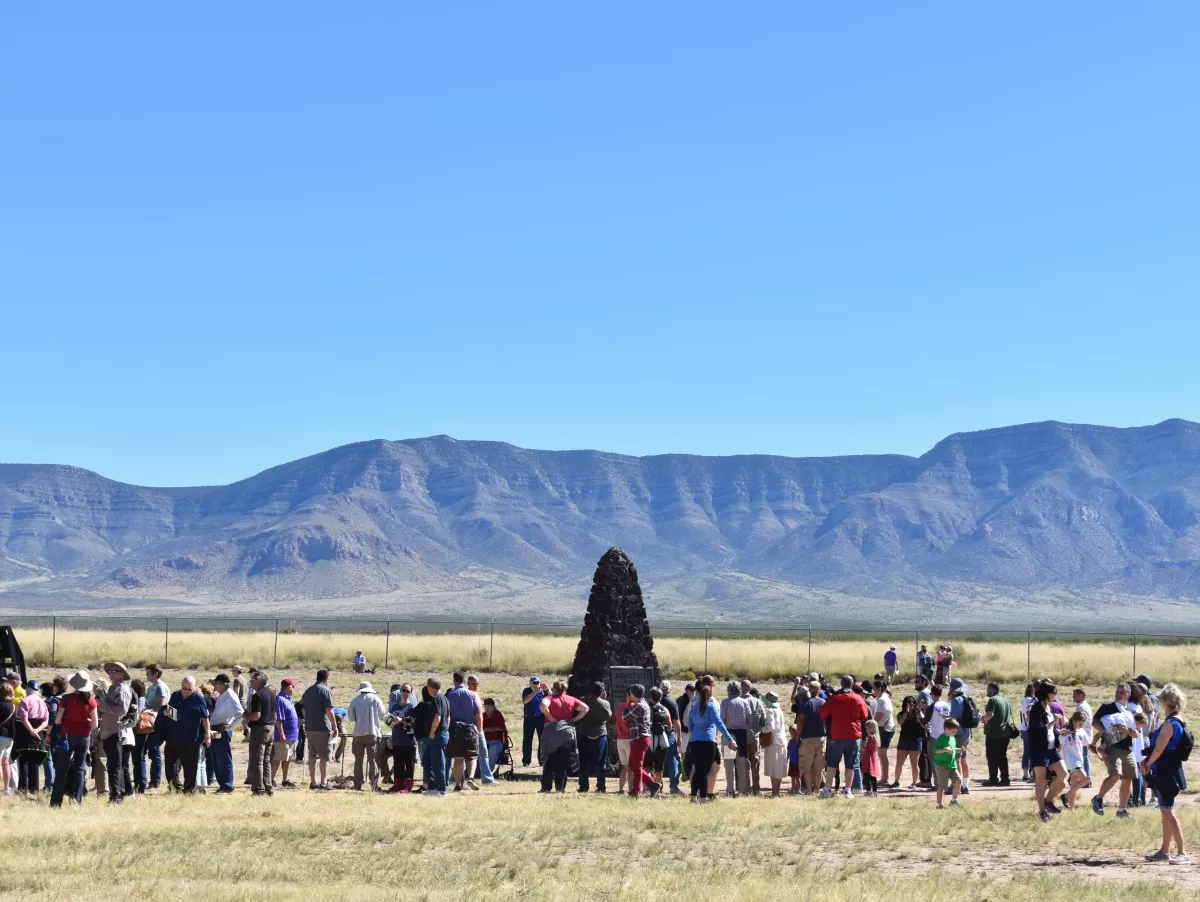America’s ground zero for nuclear innovation and consequence The Trinity Site
In an article for The Atlantic, the author provides a reflective and evocative account of the Trinity Site, where the first atomic bomb test marked the dawn of the nuclear age. Once or twice annually, White Sands Missile Range opens to allow the public onto this historical ground, where in 1945 the explosive test ignited a new era defined by nuclear capabilities. The site has drawn pilgrims and tourists alike, particularly in the wake of popular interest spurred by the recent Oppenheimer biopic, though the motives of these visitors vary widely.
The site has transitioned from a place of scientific triumph and existential dread to a destination resembling a "carnival," as co-founder of the Tularosa Downwinders Consortium Tina Cordova describes it. Outside the base, residents from nearby towns who were exposed to radiation fallout gather to remind visitors of the test's human toll. Many families have suffered cancer and other illnesses, a tragic legacy often ignored in the national narrative about nuclear progress. The downwinders’ protests contrast sharply with the atmosphere within the Trinity Site, where merchandise stands sell souvenirs like beanies and shot glasses, marking a commercialization of a moment once laden with fear and awe.

The author recounts conversations with several visitors who shared their personal connections to the site, including Gary Neighbors, whose father reportedly witnessed the flash from the Trinity test from afar, and Andy, who arrived with his father, both driven by a fascination with the monumental engineering effort that the Manhattan Project represents. These pilgrims share a reverence for the complexity of human achievement, marveling at the range of skills and scientific breakthroughs involved, even as they ponder the destructive power of the bomb itself.
At the heart of the site lies a dark stone obelisk, a marker of the blast's epicenter, surrounded by remnants of the test, like Trinitite—a glassy, green radioactive material formed by the blast's intense heat. Trinitite has become a rare and illegal collectible, with visitors eager to glimpse or even obtain a piece, often drawn to its eerie beauty. Here, the ground’s lingering radioactivity underscores the lingering presence of the test in the landscape and perhaps in the cultural psyche. The author notes how the traces of radiation, comparable to a mammogram’s dose, create an aura around the site that heightens the sense of the event's historic magnitude.
The article closes by pondering the significance of Trinity’s preservation as a historical site. The author contemplates the decision to bulldoze the original crater, questioning whether leaving it intact could have served as a more powerful, enduring reminder of the site’s ominous legacy. In an era where nuclear proliferation remains a concern, the author suggests that a preserved crater might have stood as a visible testament to humanity's potentially destructive trajectory.
In this detailed, somber portrayal, The Atlantic writer highlights the paradoxical nature of the Trinity Site: a blend of reverence and commercialization, a relic of human ingenuity and of its most dangerous weapon. As nuclear tensions persist globally, the Trinity Site serves both as a historical landmark and as a subtle admonition about the volatile power it unleashed—a power that could yet shape our world or contribute to its undoing.








